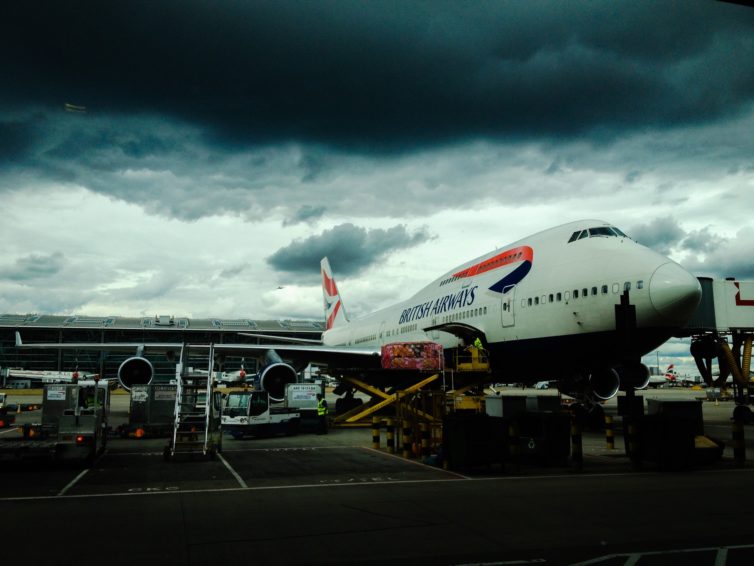
A British Airways 747 under dark skies – Photo: Francois Van
Here is something that I wasn’t expecting: staying up from 1:30 am to 5:30 am on a Saturday morning to take an online class, from British Airways, that helps people overcome their fear of flying. However, when I learned about their Flying With Confidence program, I couldn’t help but be curious.
I have never really feared flying much. Sure, there might be some hairy moments, but I typically enjoy when the flight gets a little turbulent. However, I know this is not the case for many people.
A fear of flying has always been rational to me. Not only are you in a tube flying 35,000 feet in the air, but when an airline is involved in an incident, it becomes an international story. Sure, one can share data about the safety of flying and use the classic line ’œyou are more likely to die driving to the airport,’ but those sorts of things rarely have a major impact.
Some passengers with flying phobias are able to painfully push through it, but others write off flying altogether. For those looking to overcome their fears, there are some legitimate ways to get help.
I was excited to see what the British Airways Flying with Confidence program had to offer, and I was interested to get more insight. I actually learned a few things that would not only help me with with future rough flights, but also some other phobias that I might or might not have (*cough* gnarly spiders *cough*).
ABOUT FLYING WITH CONFIDENCE
British Airways has been offering the Flying with Confidence course for about 35 years, and they have helped over 50,000 people. They claim to have a 98% success rate, and I can believe it. They offer a staff of over 40 people who assist from a number of different angles; from pilots to flight attendants, to air traffic controllers — all able to answer questions about the flying process.
Historically, they have only offered in-person courses at London Heathrow & Gatwick, Edinburgh, Glasgow, Manchester, Dubai, and Johannesburg. However, due to COVID, they started providing an online option. I felt lucky enough to participate in the first online class.
There was still an in-person session that took place in London, which had about 40 attendees safely spread out among two rooms — they typically have over 100 participants. The course was completed over two days. The first day was a presentation that went over the different aspects of flight and the psychology of flying phobias. On the second day, people boarded a British Airways Airbus A319 and took a flight to nowhere. How cool is that?
STARTING OUT – SETTING EXPECTATIONS
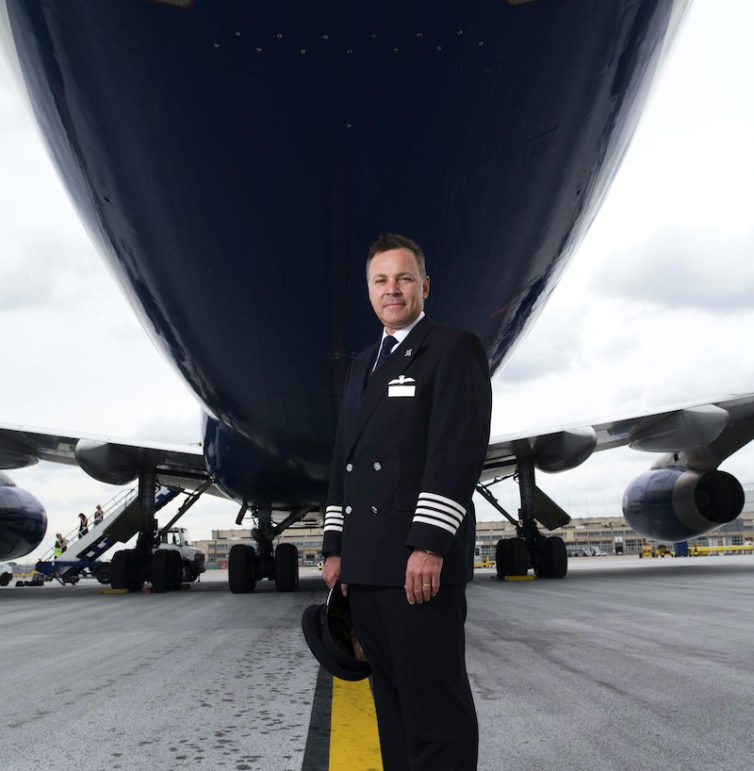
Captain Steve Allright didn’t present under a 747, but this photo was pretty sweet, so I had to use it – Photo: British Airways
While others attending in person were dressed more professionally, I was in my PJs snuggled in bed at about 1:00 am my time.
The program started with British Airways Captain Steve Allright at the helm. I was quite impressed. Not just with the fact that he was a 747 training captain, and has recently transitioned to the 787 Dreamliner, but just his tone and demeanor were so calm. If I had a fear of flying — this is the person who I wanted helping me.
He went over how he would discuss the process of flight from start to finish; including how a heavy hunk of metal can fly, how engines work, why turbulence is uncomfortable but not dangerous, and simple breathing techniques to reduce anxiety. Then Dr. Simon Petrie, a psychologist, spoke about the reason why people might have a fear of flying. They both made it a safe place to ask questions and admit your fears (even online).
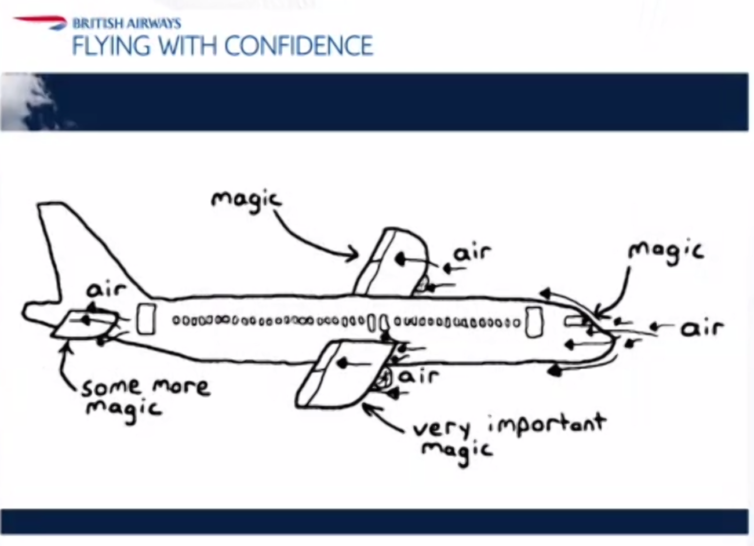
MAGIC! I loved the fact that Capt. Allright actually showed this. Of course he moved on to more scientific slides – Image: British Airways
There were three very useful pieces of advice that they kept reiterating:
- If the anxiety/stress start to feel overwhelming, stop, take some deep breaths, and be in the moment
- Give up control and trust the professionals
- Expect the best, prepare for the worst
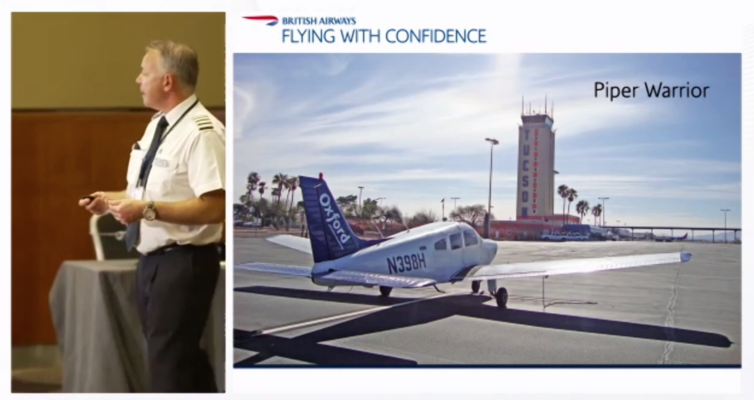
Captain Allright talked about all the flight training he received to become a BA pilot – Image: British Airways
TAKING A FLIGHT CAN BE SCARY
Even for those who fly often, it can be a little scary — or at least a mystery.
Dr. Petrie talked about how our past can influence our present fears and how we can try to overcome them. It won’t happen overnight, but those willing to push themselves are able to see a vast improvement.
The tone of the program was aware that each person attending was at a different level. For some, it was a HUGE step to just be in the room (or watching remotely). For others, taking the flight the next day was going to be their big hurdle. Everyone might have been at a different level, but they had the same goal — to fly!
THE DIFFERENT ASPECTS OF A COMMERCIAL FLIGHT
One of my favorite parts of the presentation was when Captain Allright went through typical things heard or felt during a flight. Most of these I’ve never even thought about, but it opened my eyes for how it can be for others:
- Why do the lights flicker when boarding? Changing power from the ground to APU
- What does “doors to manual, cross check complete” mean? Getting the door’s emergency slides prepared
- Why do the engines quickly reduce power after take off? Often has to do with noise abatement or the additional power is not needed
- What’s that ding shortly after take off? Typically means the plane has passed 10,000 feet
- What are those random multiple dings during flight? Just the crew calling each other via onboard phones
- Why is my aircraft barking? Oh Airbus! Not to get too technical here, it is totally normal and comes from the Power Transfer Unit (PTU)
- What was that big slam? It was just one of the flight attendants trying to get their cart back into place
Both Allright and Petrie encouraged people to ask a flight attendant if there is a process or sound that they are unsure about. They much rather you ask than fly in fear.
One of the best (and coolest) parts of the course was being able to fly on a real British Airways Airbus A319 the next day. Of course that is my perspective… I am sure for many, this was the worst (and scariest) part.
THE ACTUAL BRITISH AIRWAYS FLIGHT
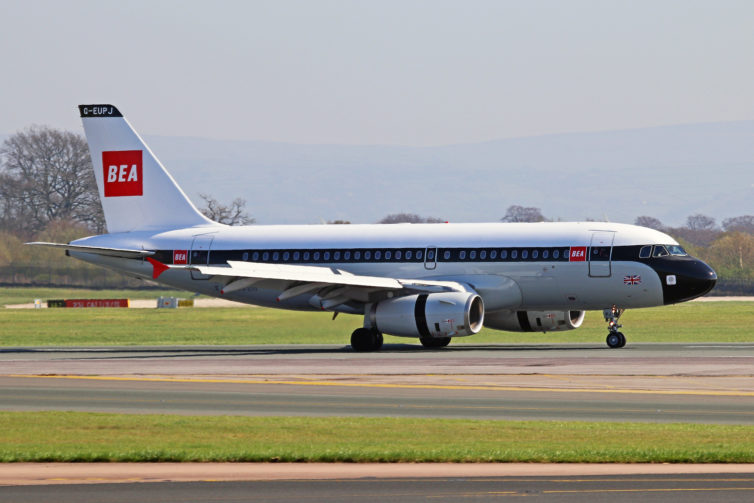
I am pretty sure that they didn’t fly the BEA retro livery A319, but it is cool, so I wanted to use it – Photo: Ken Fielding
Unfortunately, since I was 4,800 miles away in Seattle, I was not able to participate in this portion of the training, but how incredibly impressive — being able to put your new skills to the test right away.
Both Allright and Petrie made it clear that no one is forced to fly and could back out at any moment with no judgement. They only asked folks to push themselves to their limits — if not a bit beyond. If that meant making it to the parking garage, to security, to the gate, or even onto the plane, but not flying — that was totally okay.
Captain Allright talked about one participant, from a previous course, who only made it to the airport — but that was a huge success. Previously she was so afraid of flying that even when she would have some errands, she would drive way out of her way just to avoid being close to the airport. It is all about baby steps.
I asked how the flight went and I was told that it was a success! Two students opted not to take the flight, but they were excited about the progress that they made. Captain Allright was up in the flight deck, with other pilots, and he went through step by step what people were hearing and why (as described above).
FLYING WITH CONFIDENCE CONCLUSION
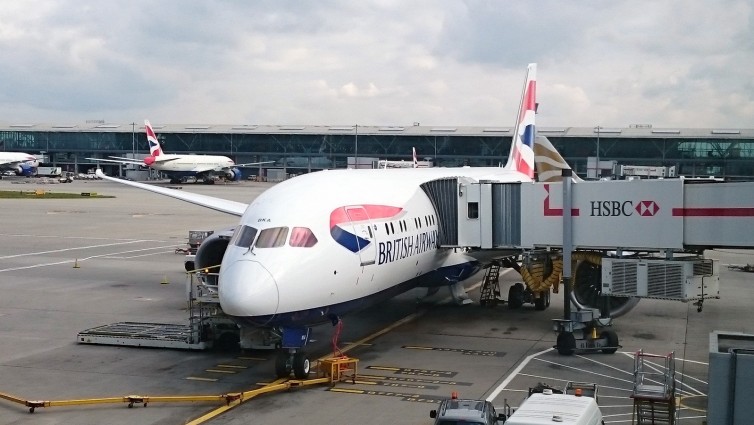
A British Airways Boeing 787 Dreamliner – Photo: Jason Rabinowitz
What a great program. It truly felt genuine, welcoming, and there is no way for a person to “fail.” There are many options out there to “cure” yourself from being afraid of flying (books, apps, etc), but how can you beat hearing from people at the airline directly and being surrounded by other people just like you?
If you, or someone that you know, are interested, the next in-person date is January 30, 2021 at London’s Heathrow. Currently, there is no remote Zoom option — they are looking into adding one. You can fill out the form on their website to show interest and keep updated on any information. There are also gift certificates, if you know someone who might find this useful. To be clear… I get zero kickbacks from anything you might purchase. I just think this is a legitimate program… even if taken during the middle of the night. And if it helps to grow the AvGeek flying community — all the better!
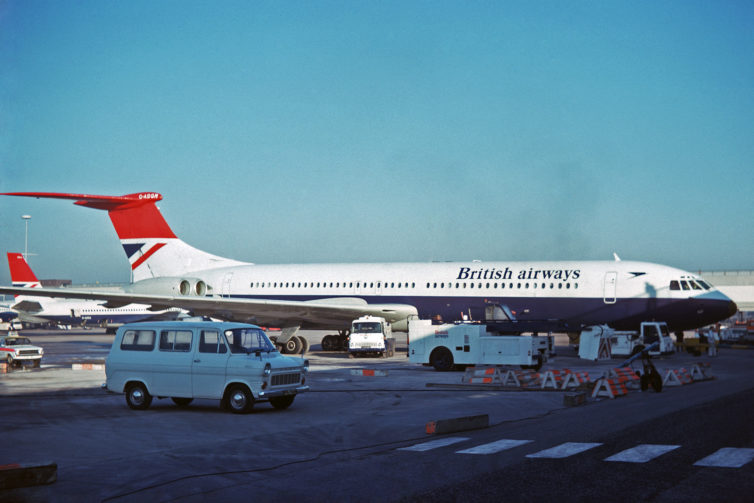
Adding a photo of a British Airways Vickers Super VC-10 just because – Photo: Ken Fielding
Have participated this program or dealt with flying phobias? I would love to hear your thoughts in the comments. What has worked, and what has not?
Note: British Airways allowed me to take this course at no charge — all thoughts are my own.
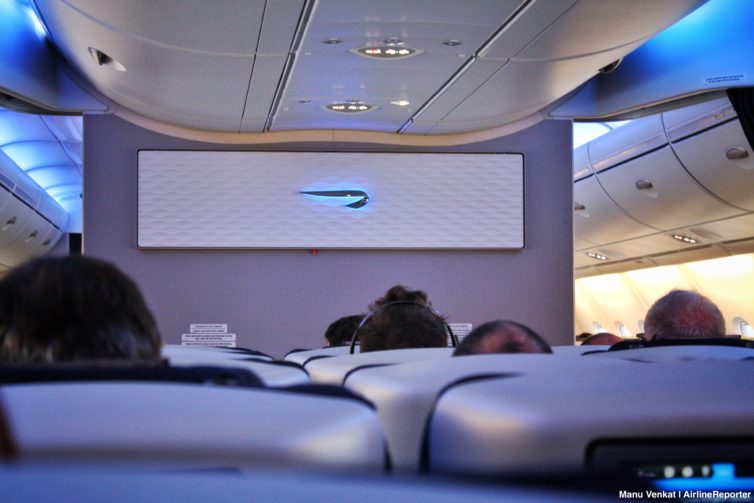
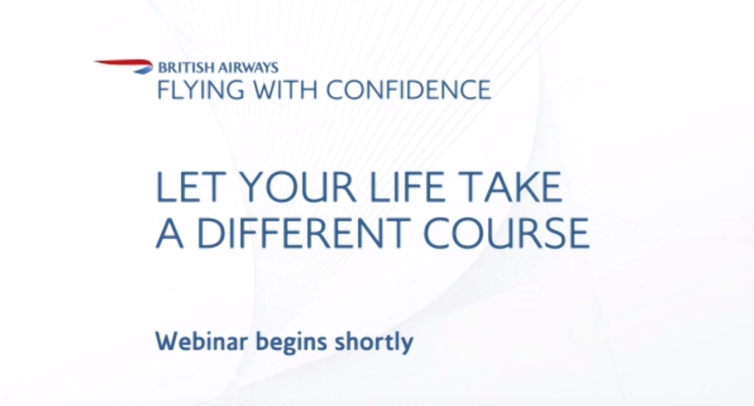
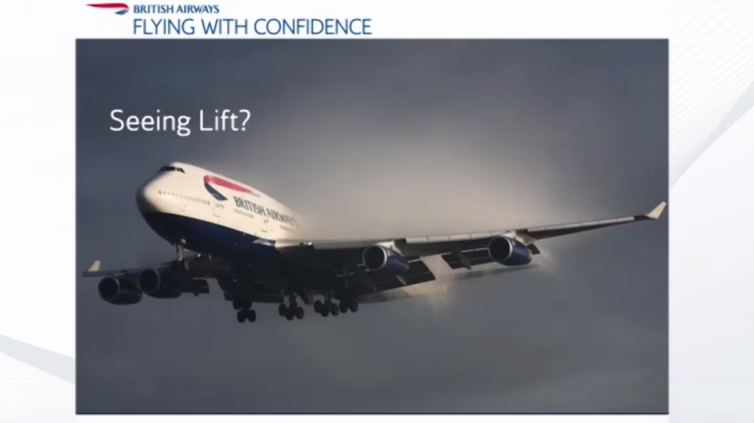
David,
No mention of price for this course, and it would be taken mainly by people who live in the cities it’s offered in. I don’t see someone who is afraid to fly going to an airport they have to fly to before taking the course.
It’s been a while, but there was something similar offered by MIA a few years ago that the local news stations had stories on. Since I am no longer in the industry, I don’t follow it as closely as I used to, so I don’t know if it is still offered. You may want to ask people associated with SEATAC if something is offered locally where you are at. It may even be offered by Boeing or at the Museum in your area.
I am not fearful of flying. In fact quite the opposite! I love flying!!!!✈! I am commenting on this beautifully written article. Thank you for sharing this info, so that more people can enjoy flight as much as we do!
How can I get involved with this program?